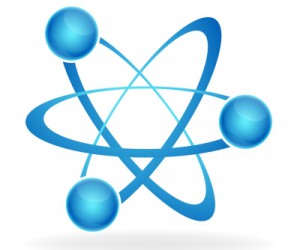The nuclear science and engineering fraternity worldwide, have not been good at projecting the genuine picture. Generally they tend to be unconvincing at projecting complex science to the public, and also tend to shrug off the negative imagery with a sigh, and then amongst themselves complain that it is time that ‘the authorities’ did something about this.
It is quite understandable that the public is afraid of nuclear waste and of other nuclear issues as well. With such a tsunami of anti-nuclear propaganda engulfing them all of the time, the result is entirely predictable. Meantime, in general terms, the public demands to be told the truth about all matters in life. The public demands ‘transparency’ and gets upset when public figures appear to be ‘hiding behind smokescreens’.
The public really do need to know the truth about nuclear power.
This is important, not only for their own peace of mind and sense of self respect, but also because the opinion of the public is an important part of national governance. A government does not want to be seen to be taking decisions that are unpopular with the voters.
A government does not want to be seen to be forcing its will on the people. A government certainly does not want to be seen to apparently not care if a few hundred people here and there die from nuclear radiation. So an informed public opinion is a necessary part of a government’s responsible decision-making cycle.
The nuclear fraternity of science and engineering companies needs to get together to present a true nuclear picture to the public, to help in producing a public which can make wise and informed choices, not based on ghost stories or fear mongering. Clouds of suspicion and uncertainty need to be cleared away.
Let us look at an issue known as the ‘Linear No Threshold’ (LNT) theory.
This is an argument that claims that there is no safe lower dose of nuclear radiation. The anti-nuclear lobby love LNT.
For them it is so powerful, because it implies that any nuclear radiation at all is dangerous. The snag is that this is just not true. It is one of those ghost stories. LNT states that any nuclear radiation is bad, no matter how small the dose is. The fact that patients go into hospital to intentionally be injected with radioactive pharmaceuticals to detect tumours or other medical conditions, is conveniently overlooked.
Radio-nuclide scans take place all day, every day, in large hospitals all over the world. Patients benefit. It is true that a large dose of radiation will kill a person, just as a cupful of arsenic will kill you, for sure. It is true that a large, but lesser, dose of radiation will make you sick, just like a teaspoon of arsenic will make you sick, but not kill.
But a small dose of radiation makes no difference at all. If you lick the tip of your finger, touch it on arsenic, and touch it on your tongue it will do nothing to you.
It is fact that homoeopaths use very small doses of arsenic as medicine; it apparently induces the body’s natural defences to kick into high gear.
Unfortunately the LNT belief is part of the legislative framework in many countries. This then leads to situations in which if somebody detects a faint trace of nuclear radiation somewhere, then they push the panic button and ‘call out the troops,’ figuratively speaking. Then TV news interrupts their regular broadcast to inform viewers that radiation has been detected...‘which could threaten the workers’.
The public need to be sufficiently reliably informed about low doses of nuclear radiation to make it possible for governments to get rid of the lead weight of LNT which hampers progress and pushes up the cost of nuclear power unreasonably.
We need to tell the public all about nuclear power in all forms, in a language that they understand. Nuclear is definitely mysterious, so it is quite hard work to project the reality of the situation with imagery that is meaningful to the whole populace.










